How to Install Windows 7 for Beginners
Install Windows using DVD
Install New
This form is for users who want to install a completely new operating system on the computer (by deleting all data on the hard drive and installing Windows) or the computer does not have an operating system.
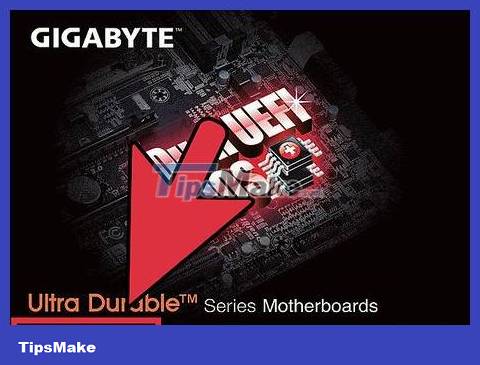
Access BIOS. Turn off the computer you want to install the operating system and then restart it. When the BIOS screen appears, press the Del, Esc, F2, F10or key F9(depending on your computer's motherboard) to access the system BIOS. The BIOS access key is usually written on the screen.
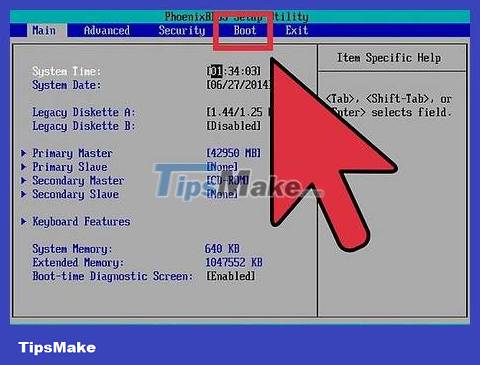
Find the boot options menu. The BIOS boot options menu has a different location, display name, and icon, but you'll still find it.
If you can't find the boot options menu, search for the BIOS name (usually found in the BIOS menu) online for more information.

Select the CD-ROM drive as the computer's first boot device.
Although each model is different, the boot options menu usually has the name of the removable device, which you can access to set the CD-ROM drive to boot first. You will see a list of devices appear in boot order. Consult the manual or search online if you can't find the boot options section.

Save settings changes. Press the button indicated on the screen and select the save option on the BIOS menu to save the configuration.

Shutdown. You can turn it off by selecting shut-down in your current operating system or holding the power button until the device turns off.
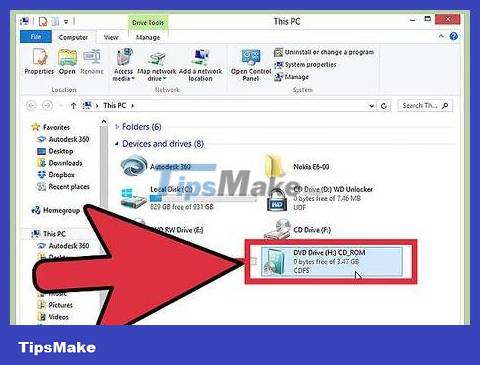
Turn on the computer and insert the Windows 7 disc into the CD/DVD drive.

Boot the computer from the drive. After inserting the disc into the drive, start the computer. When the computer starts, press the key if asked if you want to start the computer from the drive. After agreeing, your computer will download Windows Setup.
If you're not asked if you want to boot from the disc, you may have made a mistake somewhere. Retry the previous steps to fix the problem.

Select Windows Setup. After loading Windows Setup, a window will appear on the screen. Select the language, keyboard type, date and time format, then click Next .
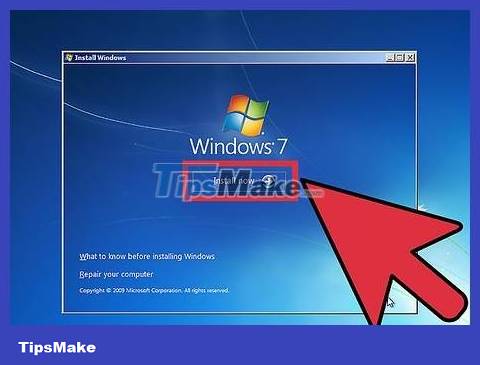
Click the Install Now button .
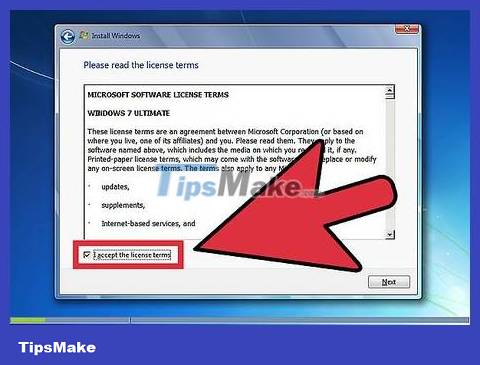
Accept the terms. Read the Microsoft Software License Terms, check the I accept the license terms box, then click Next .
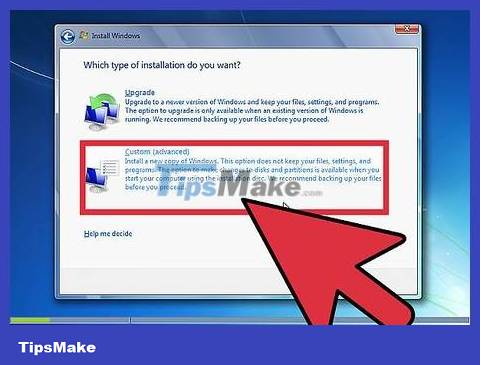
Select Custom settings .

Decide on the hard drive and partition you want to install Windows on. The hard drive is the computer's hardware where data is stored; Partitioning "divides" the hard drive into separate parts.
If the hard drive has data, erase all data or format it.
Select the hard drive in the displayed list.
Click Drive options (advanced) .
Click Format in Drive options.
If the computer is not partitioned, create a partition to install Windows on it.
Select the hard drive in the list.
Click on Drive options (advanced) .
Select New in Drive options.
Select size and click OK .
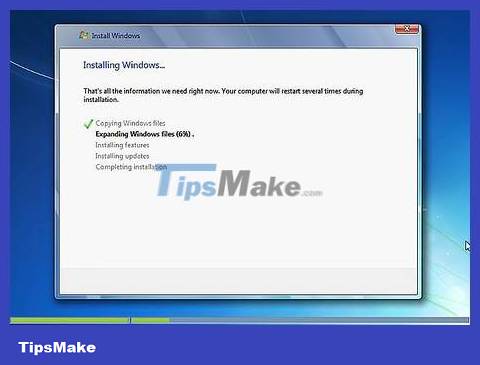
Install Windows on the hard drive and partition you want. After deciding where to install Windows, select and click Next . Windows will proceed with the installation.
Upgrade
An Upgrade installation is an upgrade from an older version of Windows to the latest version (For example from Windows Vista to Windows 7.)

Boot the computer into the operating system as usual.
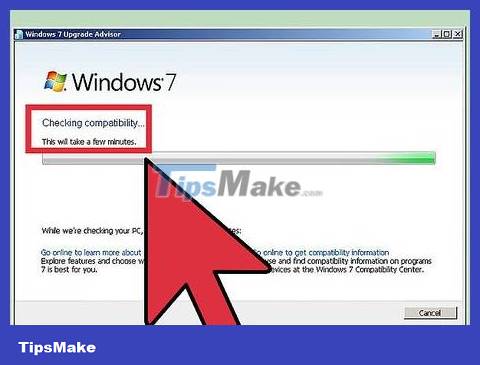
Check if the computer is compatible with Windows 7. Use Windows 7 Upgrade Advisor to scan your computer to see if it can be upgraded to Windows 7. Download here.
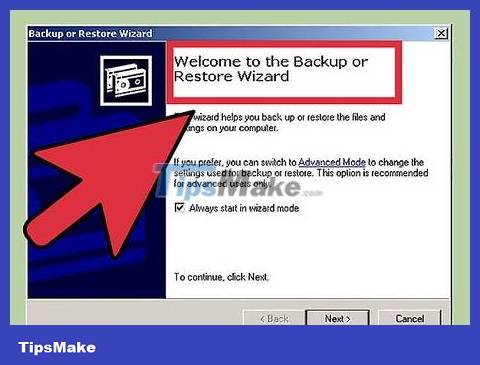
Prepare your computer to install Windows.
Scan your computer for malware. Malware prevents you from installing Windows correctly.
Disable or uninstall anti-virus software as it may interfere with the installation process.
Uninstall unnecessary programs to speed up the upgrade process. You can reinstall after installing Windows 7.
Update Windows with Windows Update.
Delete unnecessary files to speed up the upgrade process.
Back up your hard drive in case installation fails and all data is lost (optional).
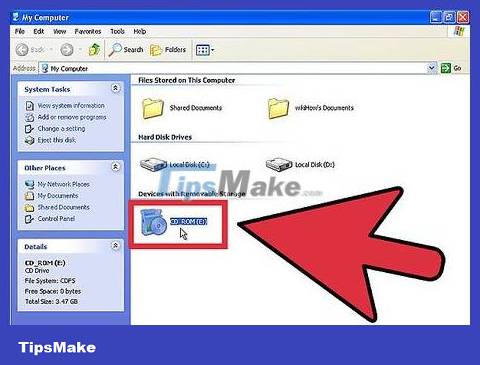
Insert the Windows 7 installation disc into your computer in this step.
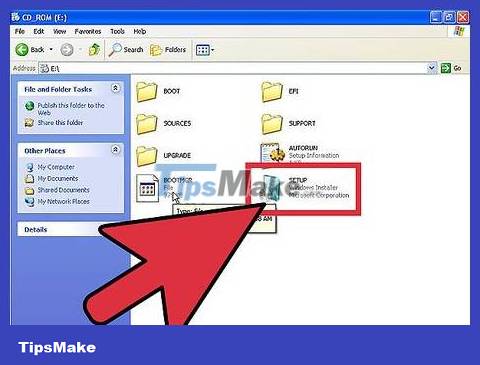
Start Windows Setup. After the disc is loaded, click Start →Computer, double click on the drive where the Windows 7 installation disc was inserted and double click on the setup.exe file in the disc. Allow the machine to proceed with the installation.
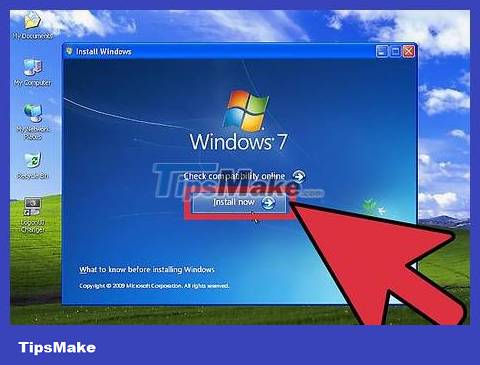
Click Install Now .
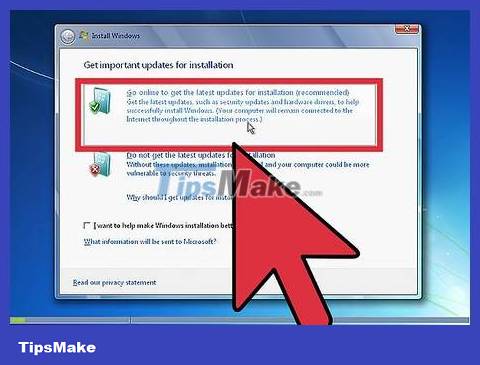
Decide whether to install updates for Windows Setup. Updates are to fix bugs identified through Windows Setup, and installing updates helps Windows 7 Setup run smoother and more stable. To install the update, click Go Online to get the latest updates for installation ( recommended). To skip the update, click Do not get the latest updates for installation .
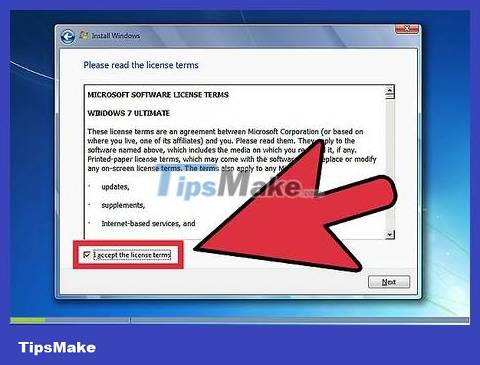
Accept license terms. Read through the Microsoft Software License Terms, check the I accept the license terms box , and click Next .
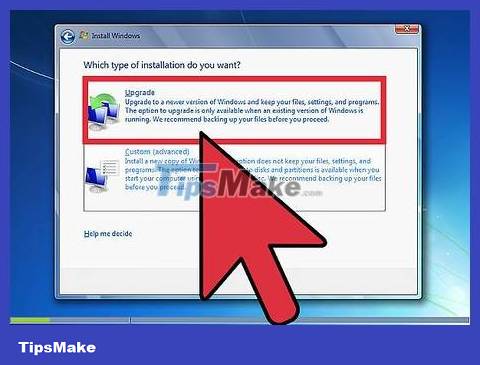
Select Upgrade settings .
Install using USB or External Hard Drive
Install Windows Setup to USB or External Hard Drive
You need to install the Windows Setup file on the other device before proceeding.
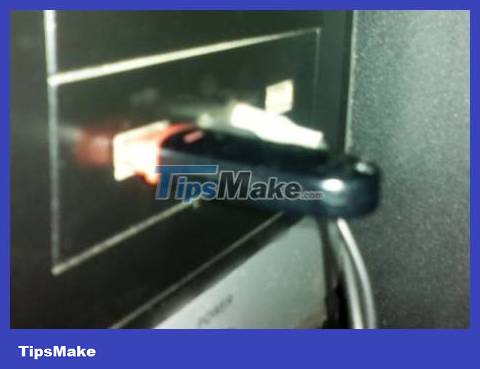
Plug a USB or external hard drive with a minimum capacity of 4GB into the computer.

Move personal data off your hard drive.
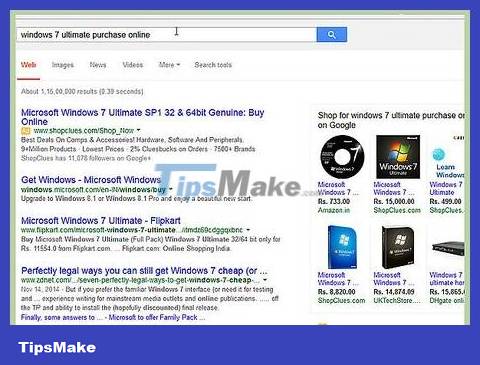
Download Windows 7 Setup ISO. ISO files are disc images. Note: the ISO file download process depends on the network speed you are using.
List of download links available here.
If the link to the site doesn't work, click here to get the link list.
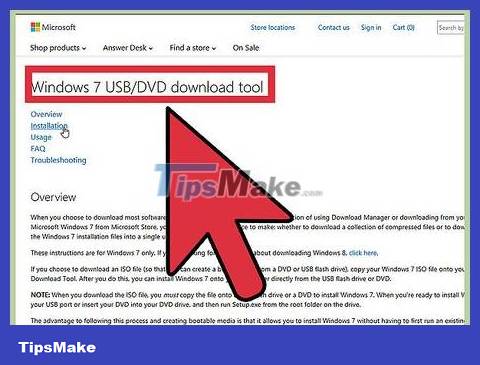
Download and install Windows 7 USB/DVD Download Tool from this link .
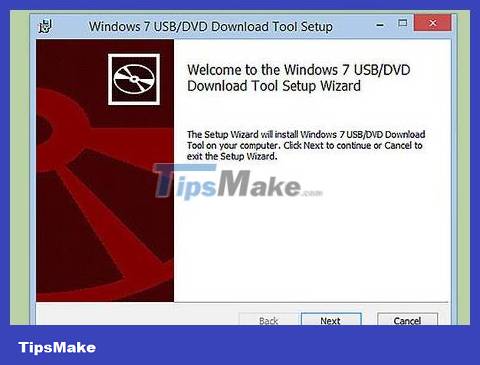
After downloading the ISO file, open Windows 7 USB/DVD Download Tool .
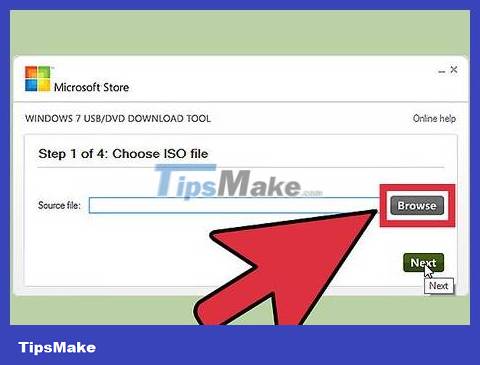
Select ISO. In the Step 1 of 4 : Choose ISO file screen of Windows 7 USB/DVD Download Tool , select the downloaded ISO file by clicking Browse , then click Click Next to continue.
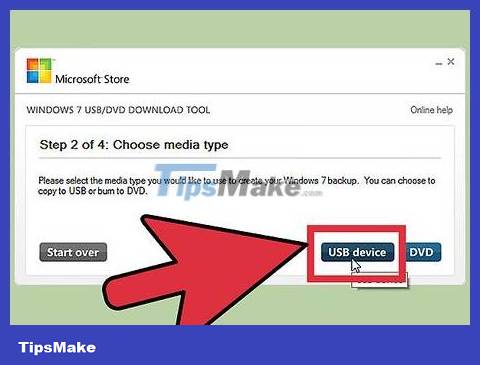
On the Step 2 of 4 : Choose media type screen , select USB device .
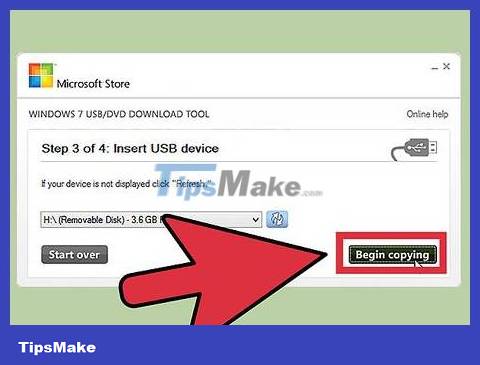
On the Step 3 of 4 : Insert USB device screen , select the device you want to copy the Setup file to, then click Begin copying . .
If you receive the Not Enough Free Space error message , click the Erase USB Device button , this option will erase all data on the device .
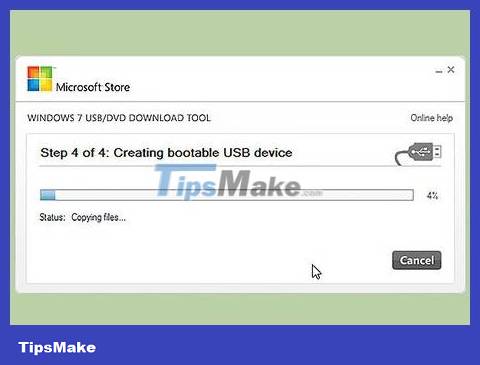
After Windows 7 USB/DVD Download Tool finishes copying the ISO file, the USB or external hard drive is ready to install Windows.
Now you can delete the ISO file on your computer because you no longer need it.
New Settings
This form is for users who want to install a completely new operating system on the computer (by deleting all data on the hard drive and installing Windows) or the computer does not have an operating system. (Note: Older computers sometimes cannot install new Windows via external storage devices).
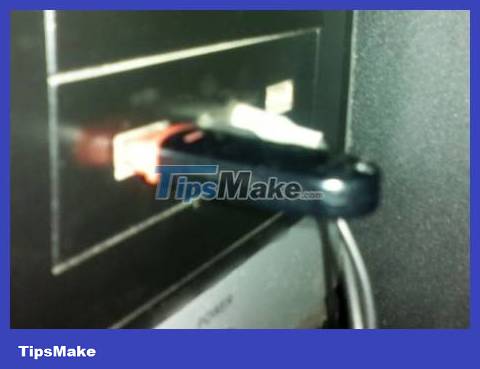
Plug the device containing Windows 7 Setup into the computer.
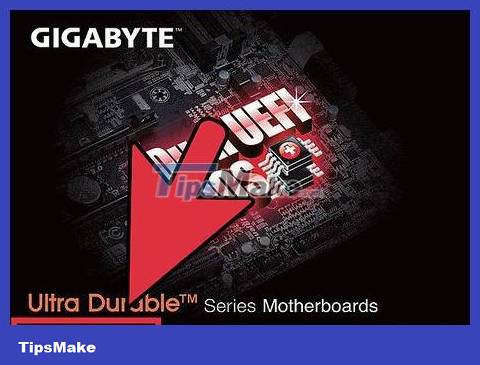
Access BIOS. Turn off the computer you want to install Windows on, then turn it back on. When the BIOS screen appears or when you are prompted, press the Del, Esc, F2, F10or key F9(depending on your computer's motherboard) to access the BIOS. The key used to access the BIOS is usually displayed right on the screen.
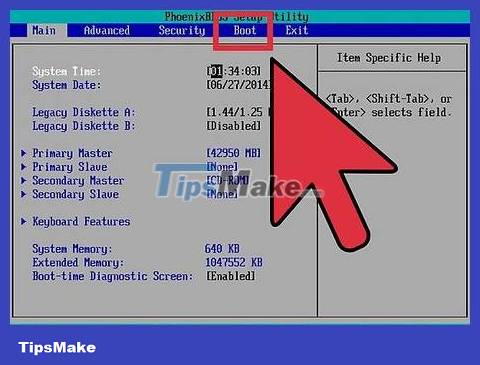
Find the BIOS boot options. The boot options menu may differ in location, name, icon, but you can still find it.
If you can't find it, look up your BIOS name (usually in the BIOS menu) online for details.
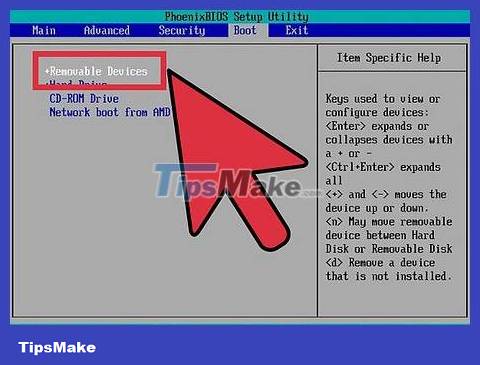
Select the external hard drive as the first boot device.
If you don't see the hard drive appear in the list of boot devices, your computer does not support this feature.
Although each machine is different, usually the boot option is the mobile device name, where you can set the first boot device. Could be a list of devices in independent boot order. Refer to the instructions or look online if you have questions.
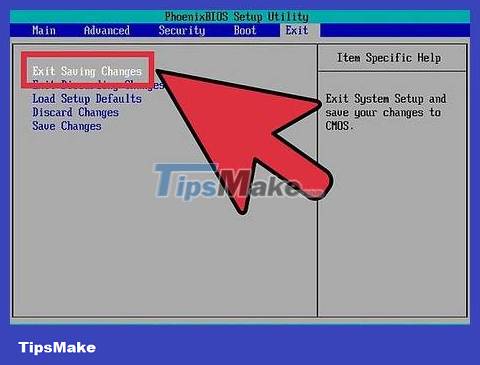
Save settings changes. Press the button indicated on the screen or select save in the BIOS menu to save the configuration.
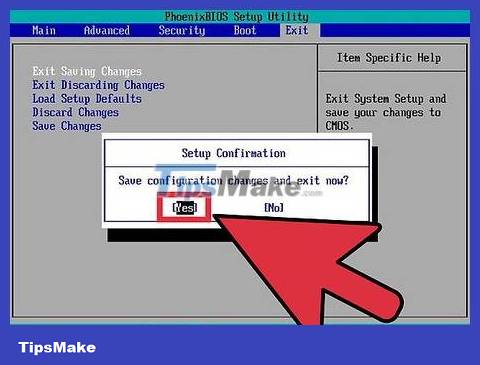
Shutdown. You can turn off the device in the usual way or hold down the power key.
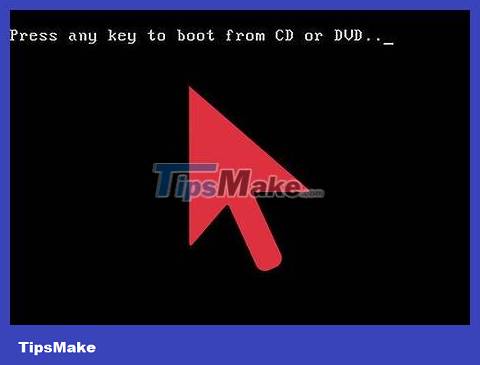
Turn on the machine. The computer will now access Windows Setup.
If the computer asks if you want to boot from CD by pressing any key, say yes. The computer will load Windows Setup.
Important information: If you see a CD/DVD device driver missing error message (CD/DVD drive not found) in this step, just click Cancel to return to the Welcome screen. At this point, unplug the USB and plug it into another port, then continue the installation.
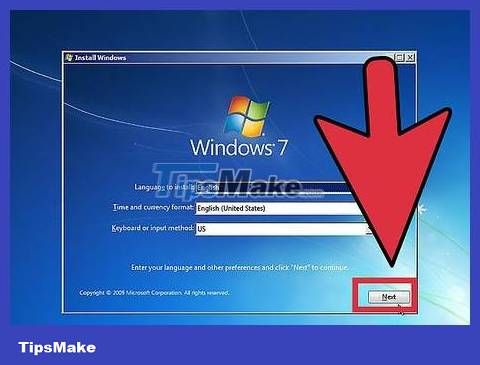
Select Windows Setup. After loading Windows Setup, you will see a window appear. Select language, keyboard type, date and time format then click Next .
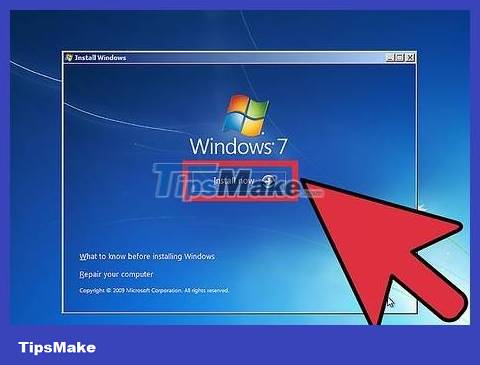
Click the Install Now button .
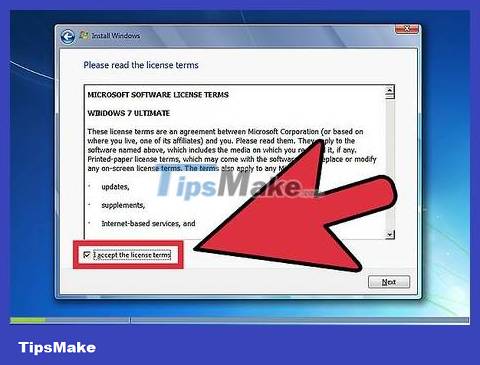
Accept license terms. Read through the Microsoft Software License Terms, check the I accept the license terms box and select Next .
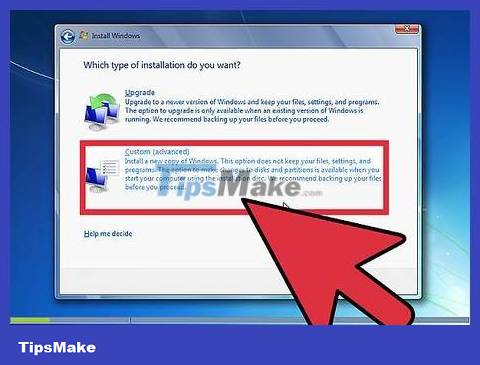
Click on Custom settings .
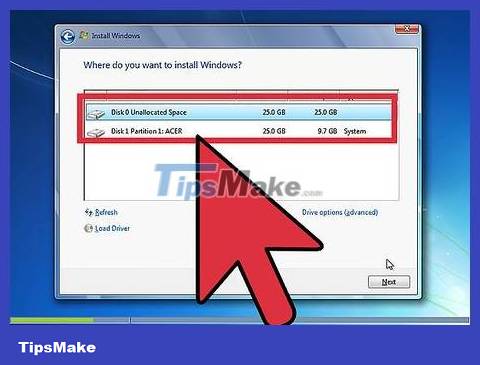
Select the hard drive and partition you want to install Windows on. The hard drive is the computer's hardware where data is stored; Partitioning "divides" the hard drive into separate parts.
If the hard drive contains data, erase the data or format it .
Select the hard drive in the list.
Click on Drive options (advanced) .
Click Format in Drive options.
If your computer has not partitioned the hard drive, create a partition yourself to install Windows.
Select the hard drive in the list.
Click on Drive options (advanced) .
Select New in Drive options.
Select size and click OK .
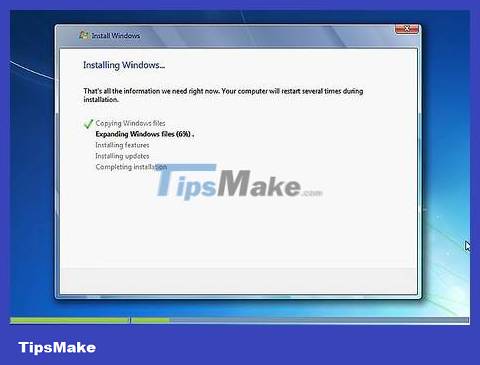
Install Windows to your hard drive and optional partition. After deciding where to install Windows, select and click Next . Windows will proceed with the installation.
Upgrade
Installing Upgrade will upgrade an older Windows operating system to a newer version, for example from Windows Vista to Windows 7.
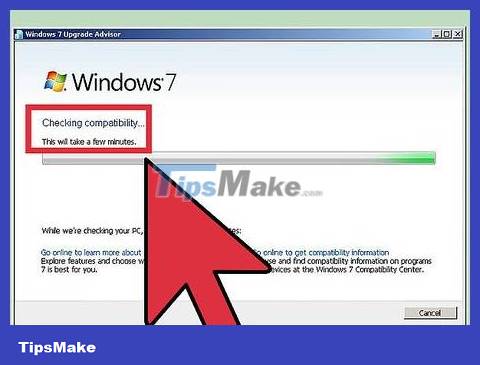
Check if the computer is compatible with Windows 7. Scan your computer with Windows 7 Upgrade Advisor to see if it can be upgraded to Windows 7. Download here.
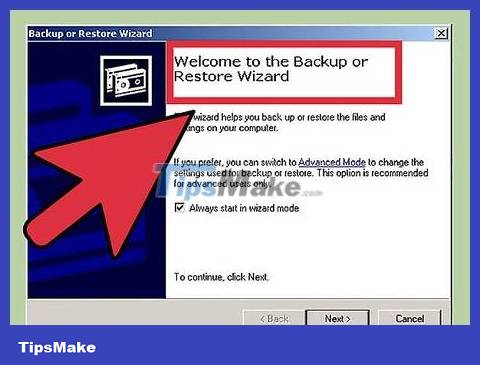
Prepare your computer to install Windows.
Scan for malware. They cause the computer to install Windows incorrectly.
Disable or uninstall antivirus software as it interferes with Windows installation.
Uninstall unnecessary programs to speed up the upgrade process. You can reinstall after completion.
Update Windows with Windows Update.
Delete unnecessary files to speed up the upgrade process.
Back up your hard drive in case of installation errors and data loss (optional).
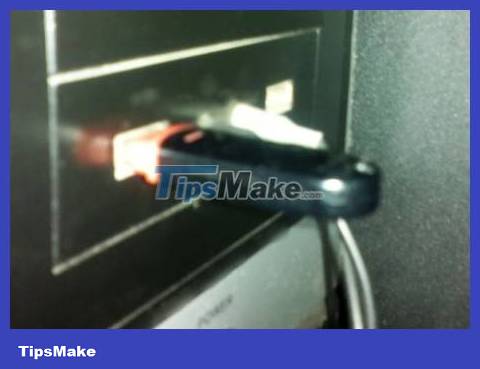
Remember to plug the device containing Windows Setup into the computer.

Start Windows Setup. Click on Start →Computer, double click on the USB containing Windows 7 Setup, double click on the setup.exe file on the disk. Allows to start Setup.

Click Install Now .
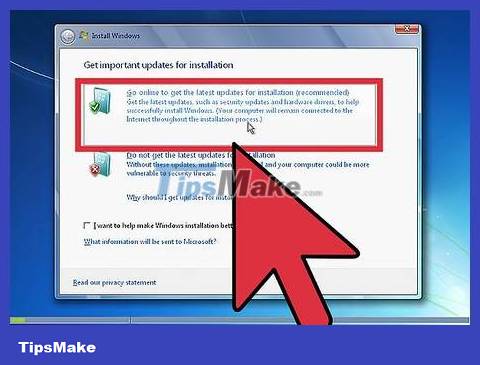
Decide whether to install updates for Windows Setup or not. Updates are used to fix bugs and installing updates helps Windows 7 Setup run smoother and more stable. To update, click Go Online to get the latest updates for installation (recommended) . If you want to skip the update, click Do not get the latest updates for installation .
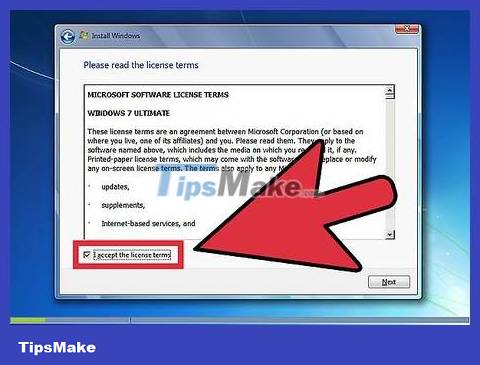
Accept license terms. Read through the Microsoft Software License Terms, check the I accept the license terms box , and click Next .
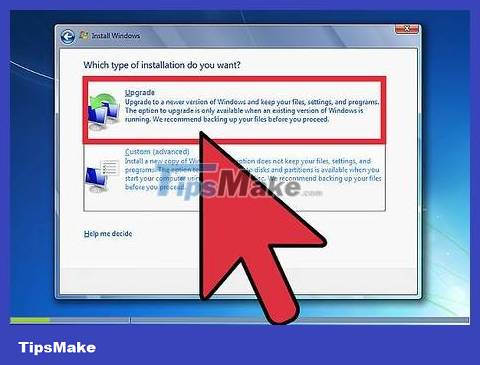
Select Upgrade settings .
After Installation
These are the steps after installation is complete and the computer has booted into the Windows 7 operating system.
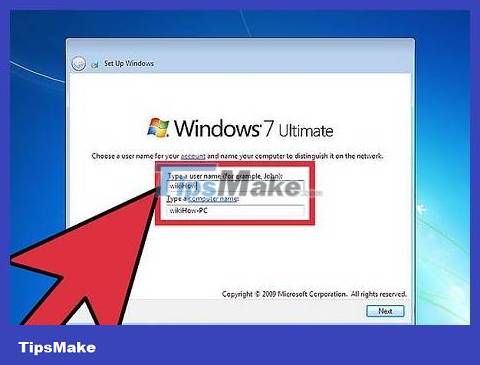
Enter the user name and computer name, click Next .
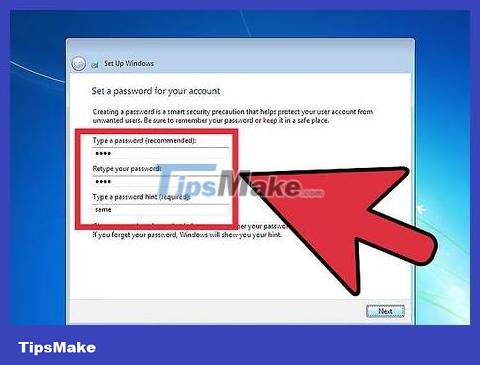
Enter the password and click Next . If you don't want to set a password, leave that field blank and click Next .
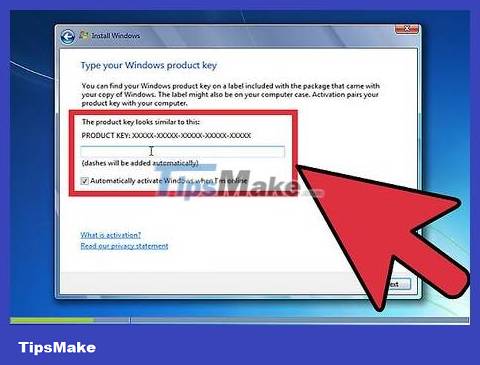
Enter the product code and click Next . The product code is on the Windows 7 disc box if you buy the disc. If you want to skip entering the code, click Next , but you can only try Windows for 30 days, after which you must enter the code.
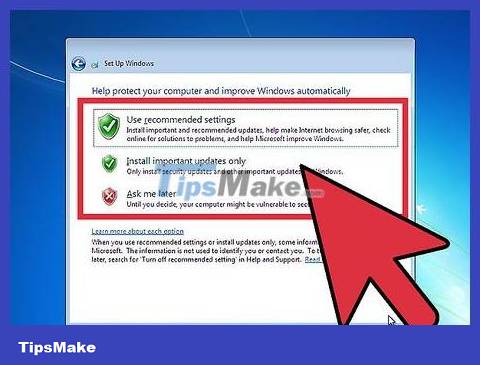
Select Windows Update settings.
The Use recommended settings option automatically sets Microsoft recommended security and update settings.
The Install important updates only option configures your computer to only install important updates.
Selecting Ask me later will disable security until you make a decision.

Set time and time zone.
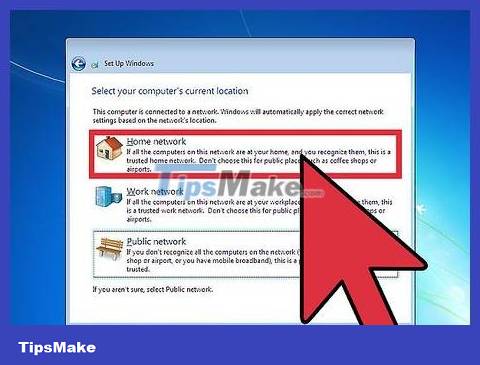
Select network type.
If your computer is connected to a personal network, select Home network .
If you connect to a network at work, select Work network .
If connecting to a network in a public place such as a restaurant or store, select Public network .
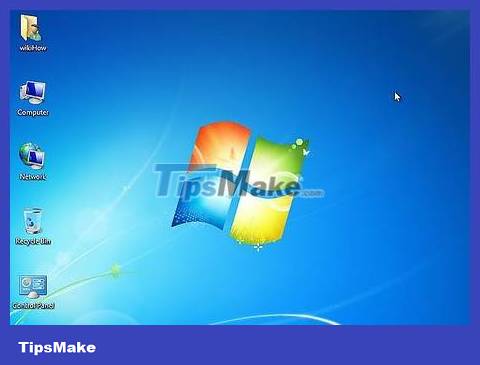
Now the computer is set up!
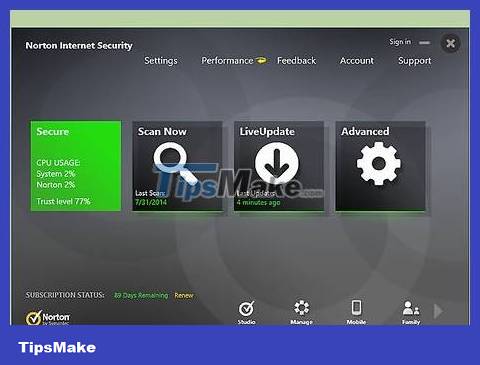
When the computer is ready, format the USB to default settings (if you chose the Install from USB or external hard drive method ). You can format the USB to default settings and transfer the files back to the way they were by right-clicking in Start→Computer, selecting Format > Restore Device Defaults , then selecting Start , optionally Selecting this will permanently erase data from the hard drive or USB . After formatting the device, you can copy data to it.
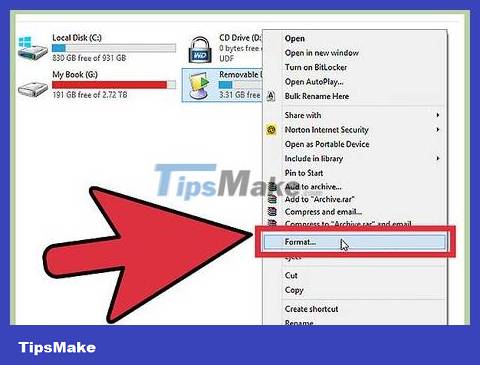
Don't forget to reinstall any software you removed, install your device's drivers, and re-enable security software. At the same time, upgrade security by installing according to Windows Update.
You should read it
- Install Windows 10 with a super fast USB in just a few simple steps
- Tips for playing Rules of Survival for newbies should not be ignored
- Install Win 10 for Android tablet
- Install Windows XP from a USB Flash drive
- How to install Windows 11 iSO by USB, for machines that do not support
- Instructions for installing Windows 8.1 on Mac
- Instructions on how to create USB install Windows 10
- Things you need to know about how to install Windows today
May be interested
- How to play Balatro game for beginners
 balatro is a card game that combines strategy and luck, giving players an exciting experience. for beginners, getting used to the mechanics and gameplay can be difficult. here is a detailed guide on how to play balatro for beginners.
balatro is a card game that combines strategy and luck, giving players an exciting experience. for beginners, getting used to the mechanics and gameplay can be difficult. here is a detailed guide on how to play balatro for beginners. - How to install Windows 11 iSO by USB, for machines that do not support
 how to install windows 11 with an iso file from usb is now used by most people because of its convenience and popularity, unlike before, installing windows is very difficult, please refer to our guide to install windows 11 we let you install windows 11 for yourself and your family and colleagues.
how to install windows 11 with an iso file from usb is now used by most people because of its convenience and popularity, unlike before, installing windows is very difficult, please refer to our guide to install windows 11 we let you install windows 11 for yourself and your family and colleagues. - Instructions for installing Windows 8.1 on Mac
 previously we showed you how to install windows 8 on a mac. however, with windows 8.1 is about to be released by microsoft on october 17, what to do? some of the following tips will help you easily install windows 8.1 on a mac computer.
previously we showed you how to install windows 8 on a mac. however, with windows 8.1 is about to be released by microsoft on october 17, what to do? some of the following tips will help you easily install windows 8.1 on a mac computer. - Guide to playing God of War for beginners
 god of war guide for beginners, important tips to remember when playing god of war for beginners, help the journey of father and son kratos and atreus
god of war guide for beginners, important tips to remember when playing god of war for beginners, help the journey of father and son kratos and atreus - How to Install Python
 python is an interpreted, object-oriented, high-level programming language that is a great place for beginners to start learning how to program. python comes installed on macs and with linux, but you'll need to install it yourself if...
python is an interpreted, object-oriented, high-level programming language that is a great place for beginners to start learning how to program. python comes installed on macs and with linux, but you'll need to install it yourself if... - Instructions on how to create USB install Windows 10
 to install windows 10 we can create usb with windows 10 installation with extremely simple and quick steps.
to install windows 10 we can create usb with windows 10 installation with extremely simple and quick steps. - Things you need to know about how to install Windows today
 to install new win, we will have many other ways such as installing from cd / dvd, from usb, hard drive, ... so do you know how to install win has advantages and characteristics?
to install new win, we will have many other ways such as installing from cd / dvd, from usb, hard drive, ... so do you know how to install win has advantages and characteristics? - Tips for playing Inscryption for beginners
 inscryption tips for beginners, inscryption tips and strategies to help beginners get acquainted with the game and get a head start
inscryption tips for beginners, inscryption tips and strategies to help beginners get acquainted with the game and get a head start - Instructions to install Windows by USB, create USB boot, USB install Windows
 creating usb boot, usb install windows is very necessary when your computer does not have a damaged cd / dvd drive or dvd drive is unusable. all you need is a 4gb usb and windows installation iso file ...
creating usb boot, usb install windows is very necessary when your computer does not have a damaged cd / dvd drive or dvd drive is unusable. all you need is a 4gb usb and windows installation iso file ... - Install Windows 8 on the new partition
 here's how to download and install windows 8 developer preview build on a new partition on the hard drive.
here's how to download and install windows 8 developer preview build on a new partition on the hard drive.










 Windows 7, Windows Server 2008 R2 will continue to be unofficially supported for another two years
Windows 7, Windows Server 2008 R2 will continue to be unofficially supported for another two years How to add Services to Control Panel in Windows 10, 8 and 7
How to add Services to Control Panel in Windows 10, 8 and 7 How to switch Windows XP Mode from Windows 7 to Windows 10
How to switch Windows XP Mode from Windows 7 to Windows 10 How to reset Windows 7, restore Windows 7 fastest
How to reset Windows 7, restore Windows 7 fastest Instructions on how to quickly install Ghost Win 7 using USB
Instructions on how to quickly install Ghost Win 7 using USB Configure Auto-Login for Windows 7 Domain or Workgroup PC
Configure Auto-Login for Windows 7 Domain or Workgroup PC